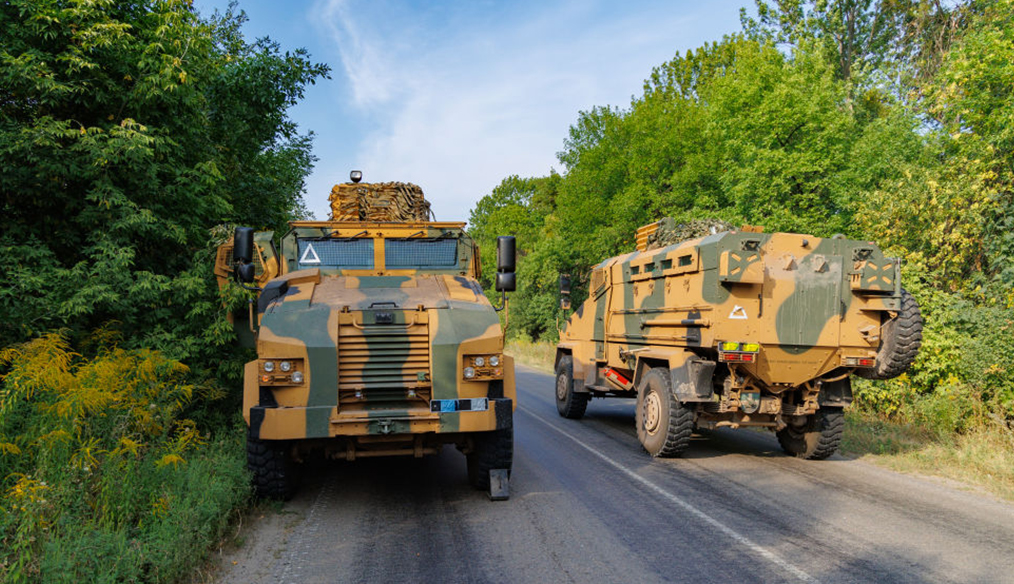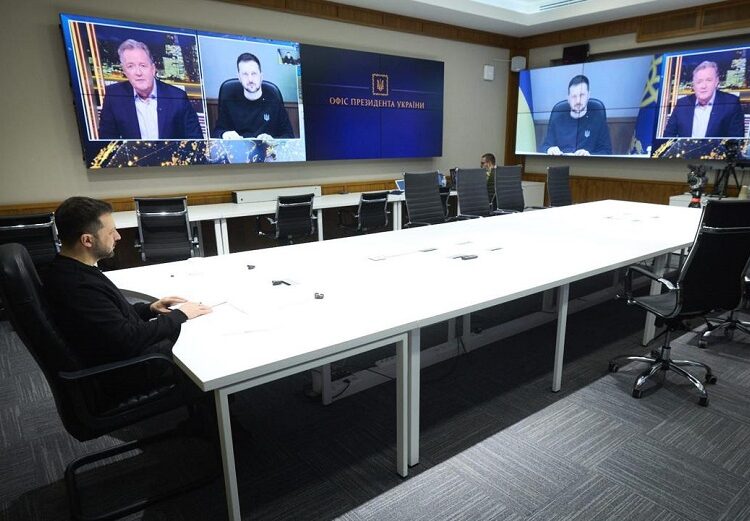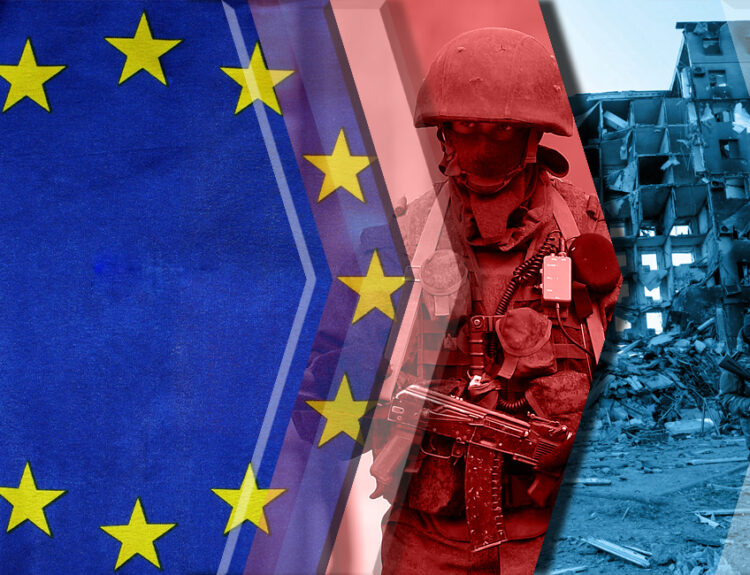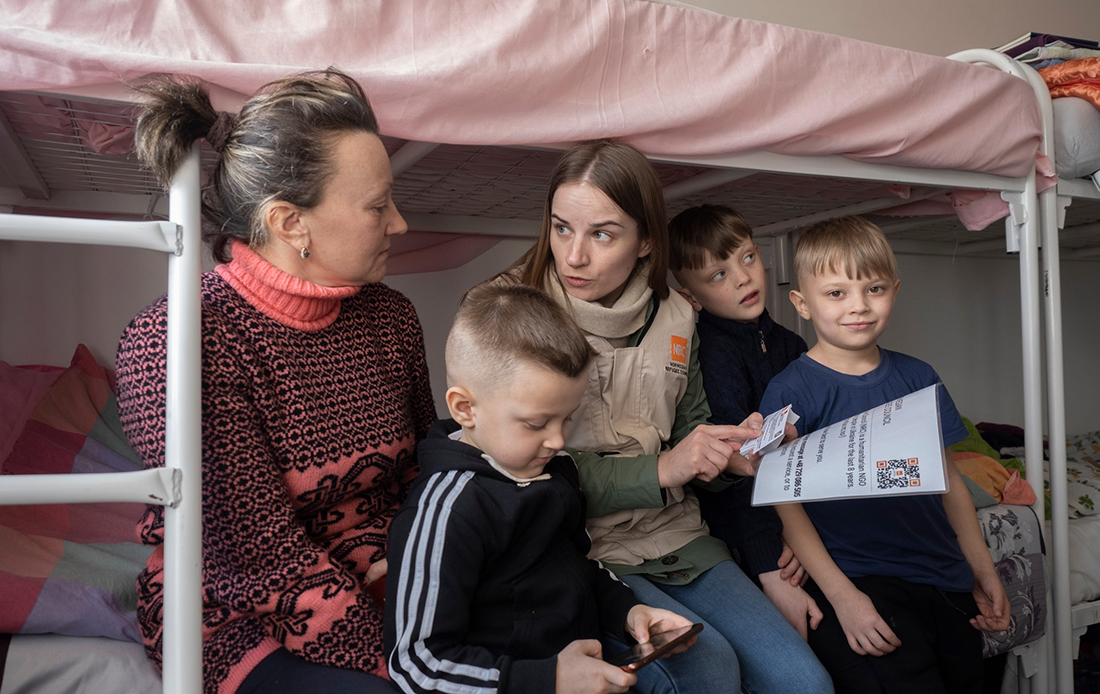Attack on Russia’s Kursk Region Going as Planned, Says Ukrainian Commander Oleksandr Syrskyi. Ukrainian President Volodymyr Zelensky is ramping up his requests to allies for permission to use their weapons against Russian military targets. The Azov Brigade has launched a counteroffensive near the town of New York in the Donetsk region. Meanwhile, Russian forces used Iranian drones for a massive attack on the centre of Kyiv during the night of 6 to 7 September. Ukraine’s Ministry of Foreign Affairs has warned Tehran that, should it be confirmed that Iran has supplied ballistic missiles to the Russian Federation, it will have devastating consequences for Ukrainian-Iranian bilateral relations. According to reports citing American and European officials, Iran has already sent short-range ballistic missiles to Russia.
The summer campaign in the Russo-Ukrainian war is nearing its end. Only a few weeks remain before autumn rains turn the Ukrainian steppes into a quagmire unsuitable for the movement of heavy military equipment. This is why the Russians are desperately attacking Ukrainian positions in the Donetsk region, heading towards the city of Pokrovsk. There, a so-called Pokrovsk bulge has formed, approximately 35 kilometres deep and 20 kilometres wide. Dozens of attacks are launched daily in various directions, with Russian forces suffering enormous losses in manpower and equipment, yet they continue to press forward, wave after wave. This has been the situation for seven months.

Photo: The Pokrovsk Bulge remains a threat. Source: Deepstate.live
Cold Times Are Approaching
The frontal assault by the Russians in the western part of the Donetsk region is considered the most dangerous for Ukraine, as it threatens to break through to the Dnipropetrovsk region and allow Russian forces to reach the administrative border of the Donetsk region, which Putin claims as part of Russian territory. Let us remind you that in 2022, the Russian parliament passed amendments to the Russian constitution, declaring not only Ukrainian Crimea but also four Ukrainian regions within their administrative borders as part of Russian territory. This has also been declared as a Kremlin negotiation position for ending the war.
Less intense fighting is taking place in southern Ukraine, in the Zaporizhzhia and Kherson regions on the left bank of the Dnipro River. However, there is no peace there either, especially closer to Kherson. Simultaneously, Ukrainian forces are making gradual advances in Russia’s Kursk region, which they attacked on 6 August. They are now approximately 40 kilometres from the Kursk Nuclear Power Plant near the city of Kurchatov, and about 65 kilometres from the city of Kursk, the regional capital. The distance from Kursk to Moscow is roughly 450 kilometres.
Russian command has transferred tens of thousands of troops to the Kursk region, including some of its most capable units, specifically airborne assault troops.
The summer campaign in Ukraine began in May when Russian forces attempted to encircle the country’s second-largest city, Kharkiv, located 40 kilometres from the Russian border. The Russian offensive there quickly stalled, with their forces being pushed back towards the border. Heavy fighting continues in the area, although the intensity is much lower than on the Pokrovsk front.
The renewed threat of a Russian advance on Kharkiv was supposed to force the Ukrainian command to withdraw forces from the Donetsk direction. However, this did not happen. Instead, after three months of secret preparation, Ukrainian forces attacked the Kursk region, creating a real threat of encircling the neighbouring regional centre, Belgorod, from which an offensive across the border is being launched on Kharkiv. Additionally, they have moved closer to one of Russia’s largest nuclear power plants, the Kursk Nuclear Power Plant, thus creating a symmetrical response to the capture of the Zaporizhzhia Nuclear Power Plant by Russian forces in southern Ukraine in the spring of 2022.
Following the Ukrainian advance into the Kursk region, Russian forces at the Zaporizhzhia Nuclear Power Plant staged a provocation on 11 August, setting fire to combustible materials in the cooling tower, a massive structure used to cool steam after it passes through the turbines. This provocation posed no immediate threat to the reactors, as the cooling tower is located far from the reactor halls. However, according to Rafael Grossi, Director General of the International Atomic Energy Agency (IAEA), who visited the station for the fifth time since its occupation, the structure will need to be dismantled after the fire.
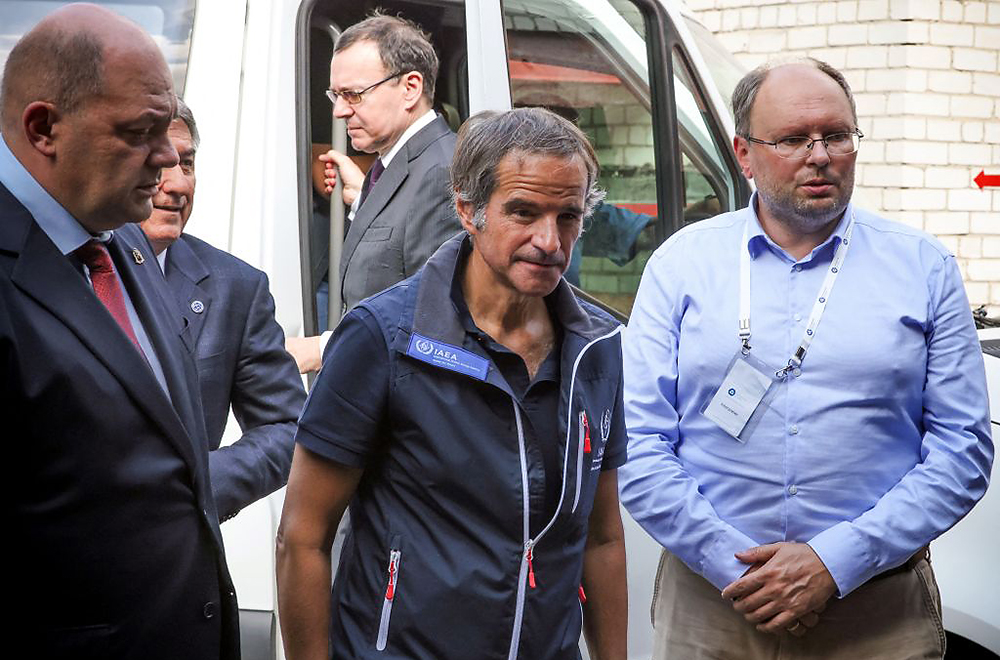
Photo: Rafael Grossi (center), Director-General of the International Atomic Energy Agency, during his visit to the Kursk Nuclear Power Plant, saw no direct threat to it.
Grossi also visited the Kursk Nuclear Power Plant on 27 August, but after his trip, he did not confirm Russian claims of an attack on the station. He did not verify that Ukrainian forces had attacked any facilities at the plant with drones or taken any other actions that could pose a threat. Grossi announced this at a press conference following the visit. He also stated that the station is currently operating in a mode close to normal. Nevertheless, the IAEA chief noted that the Kursk Nuclear Power Plant is “extremely vulnerable” due to the absence of a protective dome over the facility.
The Kursk Leverage
A month ago, Ukrainian forces swiftly took control of the Russian town of Sudzha near the border, along with an important gas hub that continues to facilitate the transit of Russian natural gas through Ukraine to Western Europe. Attempts by Russian commanders to push Ukrainian forces back to the border have proven futile. Instead, there has been slow but steady progress deeper into Russian territory.
The scale of the Ukrainian offensive can only be inferred from indirect signs, as the Ukrainian command does not disclose the situation, while Russian official sources continue to disseminate false reports. In his daily video address, President Volodymyr Zelensky finally hinted at his intentions in this offensive – to prevent Russian forces from invading the Sumy region, from where it is just 320 kilometres to Kyiv. Let us recall that in February 2022, Russian forces advanced through the Sumy region and the Belarusian border in an attempt to encircle Kyiv.
In an interview with CNN, Ukraine’s Commander-in-Chief Oleksandr Syrskyi elaborated: “This has reduced the enemy’s offensive threat. We have hindered their actions. We have moved the fighting to the enemy’s territory so that they experience what we face every day.” He also confirmed that Russian command has transferred tens of thousands of troops to the Kursk region, including some of its most capable units, specifically airborne assault troops.
This transfer did not happen immediately. For approximately three weeks after the Ukrainian attack in the Kursk region, Russian sources boasted that this manoeuvre had not forced the Russian command to redeploy their capable units from the Donetsk region. But that is no longer the case.
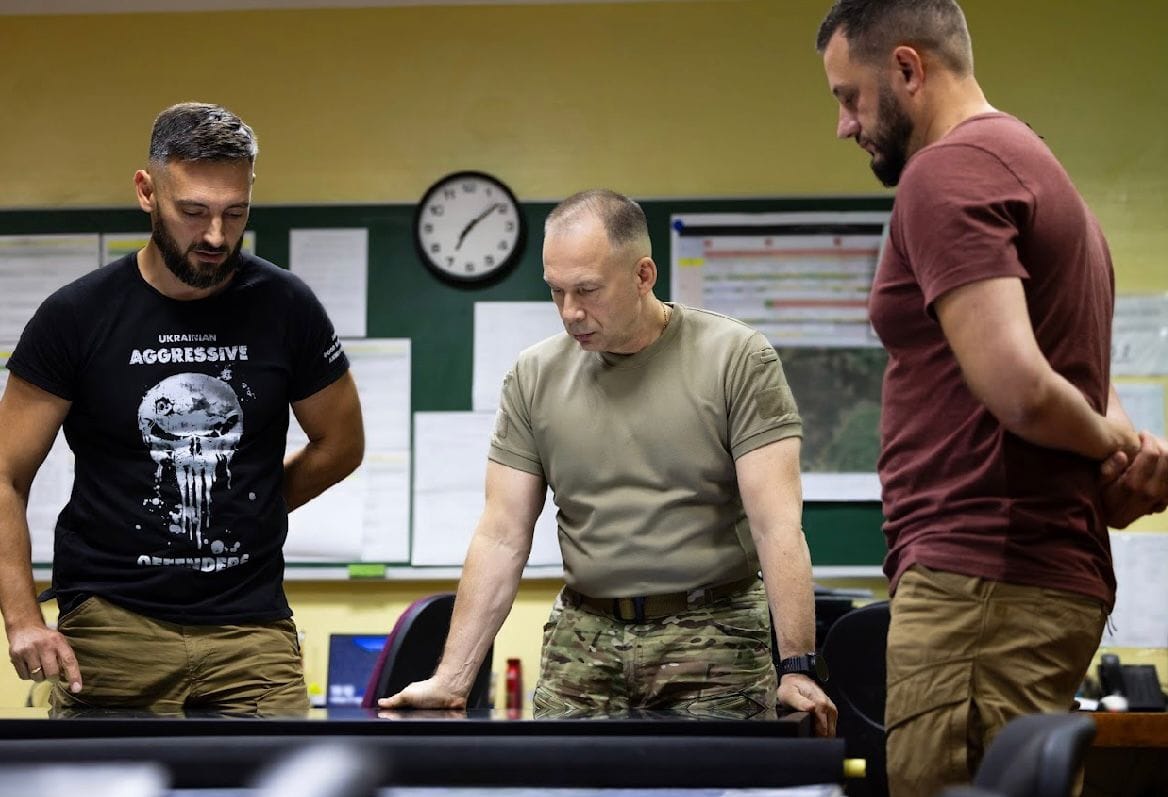
Photo: General Oleksandr Syrskyi (centre) considers the attack in Kursk Oblast necessary and successful. Source: General Staff of the Armed Forces of Ukraine
According to information from the Ukrainian OSINT group DeepStateMap, the following Russian military units have been deployed to the combat zone in the Kursk region:
- 56th Guards Air Assault Regiment, previously spotted in the Zaporizhzhia region.
- 11th Separate Air Assault Brigade, previously located in the Kherson region on the left bank of the Dnipro River.
- 488th Guards Motor Rifle Regiment of the 144th Guards Motor Rifle Division, nearly destroyed during the 2022 Kharkiv offensive and subsequently stationed in Klintsy, Bryansk region, northwest of the Kursk combat zone.
- 810th Separate Marine Brigade, transferred from southern Kherson, near the village of Krynky on the left bank of the Dnipro River.
- 155th Marine Brigade, relocated from the Pokrovsk bulge in Donetsk. This is the most capable unit to be transferred from that region to the Kursk area.
- Assault Battalion “Pyatnashka” of the 100th Motor Rifle Brigade, moved from the Pokrovsk bulge in Donetsk. This battalion is notable for including foreign mercenaries.
- 200th Separate Guards Motor Rifle Brigade, part of the Russian Northern Fleet’s coastal forces, devastated during the Ukrainian counteroffensive in Kharkiv in autumn 2022 and has since been restoring its combat effectiveness.
- 64th Separate Motor Rifle Brigade, transferred from the Zaporizhzhia region, infamous for its involvement in the “Bucha Massacre” during the spring 2022 attempts to encircle Kyiv.
- 38th Separate Motor Rifle Brigade, relocated from the area of Vuhledar in the Donetsk region, south of the Pokrovsk bulge.
- Additionally, battalion tactical groups from Russian units engaged in combat near Kharkiv, Kupiansk in the Kharkiv region, and the Luhansk region have also been redeployed to the Kursk region. Separate special forces units under the command of the Russian Main Intelligence Directorate (GRU) have also been deployed there.
Overall, the situation suggests that for about two weeks, the Russian military command tried to manage with existing reserves near the border. However, they have since started transferring military units from more distant locations. It seems that the first units moved to the combat zone in the Kursk region were those recovering from heavy losses. But by late August and early September, more capable units from the Donetsk, Kherson, and Kharkiv regions began to be redeployed.
The Pokrovsk Bulge
The situation in western Donetsk region remains extremely challenging for Ukraine. The so-called Pokrovsk Bulge is heavily reinforced with Russian troops, and the Russian command shows little regard for losses in both personnel and equipment.
This bulge is aimed at capturing the next relatively large Ukrainian city – Pokrovsk, which had a population of around 30,000 before the full-scale war. Beyond Pokrovsk, it is about 20 kilometres to the border of Donetsk and Dnipropetrovsk regions and approximately 150 kilometres to Ukraine’s largest river, the Dnipro, as well as the country’s third-largest city, Dnipro.
Although Ukrainian forces managed to stabilise the situation by late August, the fighting remains intense. On 5 September, in a previously mentioned interview with CNN, the Commander-in-Chief of the Armed Forces of Ukraine, Oleksandr Syrskyi, stated that Ukrainian forces had stopped the Russian offensive in the Pokrovsk direction: “In the past six days, the enemy has not advanced a single metre in the Pokrovsk direction. In other words, our strategy is working… and this weakening is clearly felt in other areas. We have noted a decrease in artillery shelling and the intensity of their offensive.”
As of 8 September, the front line was about 10 kilometres from Pokrovsk. Last week, the Ukrainian administration cancelled evacuation trains from the city. Now, residents are being evacuated by buses to the nearest safe train stations, from where they are taken further west. Many people are leaving on their own. The neighbouring town of Myrnohrad (translated as ‘City of Peace’) is also suffering from severe Russian shelling.
While no one plans to surrender Pokrovsk, the rescue of civilians remains a key task for military and civil authorities.
In reality, this balance is fragile, and future developments will depend on how quickly Ukraine receives weapons from its international partners. Additionally, the situation hinges on how soon the US, the UK, Germany, France, and other allies allow Ukraine to use these weapons to strike targets deep within Russian territory. One of the key tools in Russian attacks is the use of heavy glide bombs from aircraft operating from military airfields relatively close to the frontlines in Russian territory.
Another critical need for Ukrainian forces is the ability to strike logistical hubs in Russia’s rear. Last week, Ukrainian drones destroyed a depot in the village of Soldatskoye, Voronezh region, where ballistic missiles, supplied to Russia by North Korea, were being stored. These drones likely launched from the Kharkiv region and travelled approximately 220 kilometres. This successful operation demonstrates the Ukrainian military’s capability to locate valuable targets and effectively plan operations to destroy them. What is missing are more powerful and efficient means than slow-moving drones. Ukraine needs short-range ballistic or aviation missiles, along with permission to use them against targets on Russian soil.
Meanwhile, as Ukraine waits for more weapons and the authorisation to use them, the Azov Brigade is fighting in the village of New York, located in the Donetsk region.
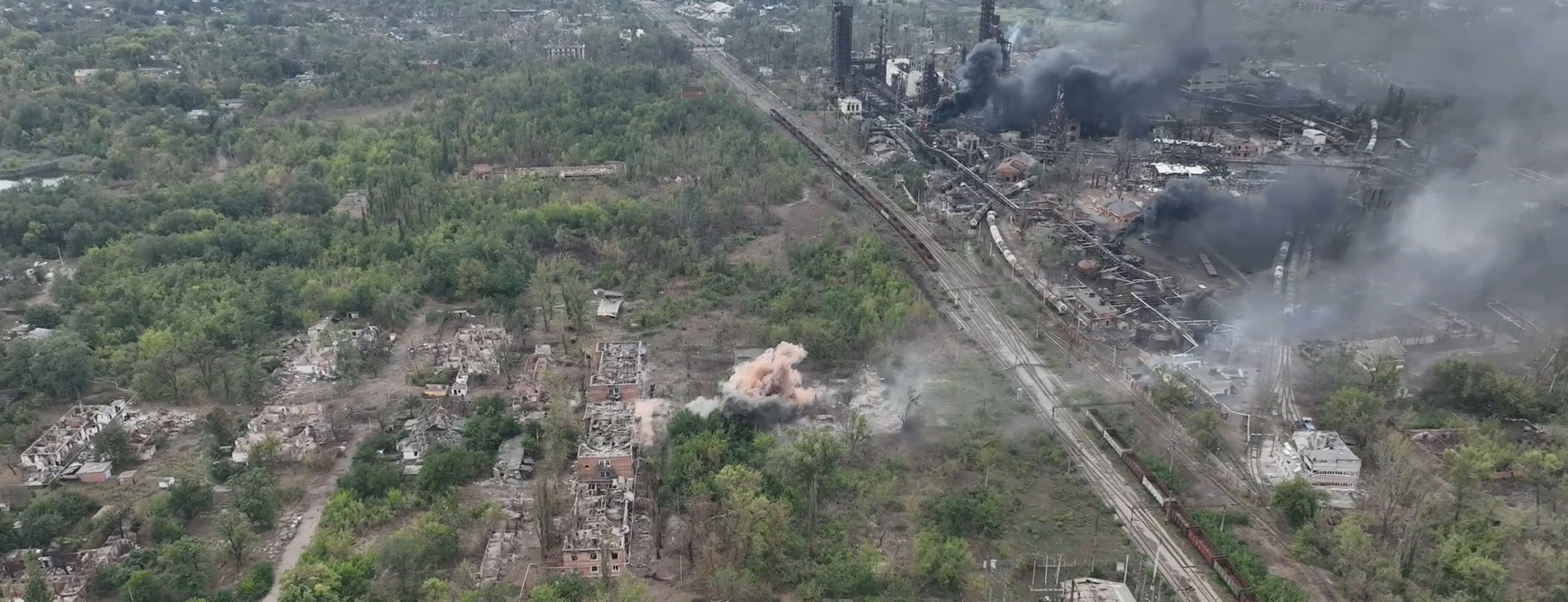
Photo: The Azov Brigade liberates the town of New York in Donetsk Oblast. Source: 12th Azov Brigade
In the second half of August, Russian forces reported that after six weeks of fighting, they had captured this village, which holds significance as a stronghold on the northern edge of the Pokrovsk Bulge. However, the intervention of Azov Brigade fighters changed the situation. They partially recaptured the village of New York on 6 September and fortified their positions there. Why New York? Historians believe the name originates from the town of York in Lower Silesia (Germany), as German settlers moved to this village approximately 250 years ago. During Soviet times, the village was renamed, but in 2021, the Ukrainian parliament restored its historical name. Before the full-scale invasion, New York in the Donetsk region had a population of about 9,000 people.
Thus, it turns out that the attack on the Kursk region is gradually tipping the scales in favour of the Ukrainian military at the Pokrovsk Bulge.
Source: The Gaze


